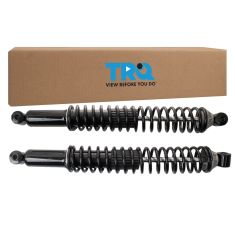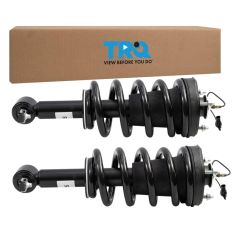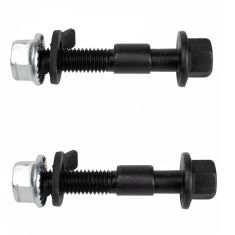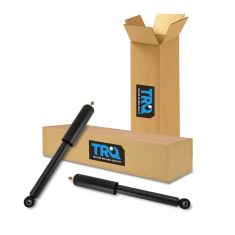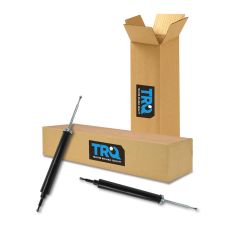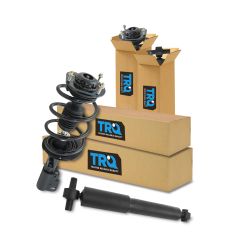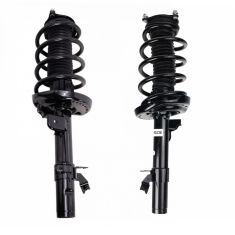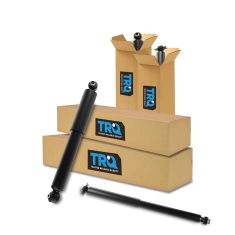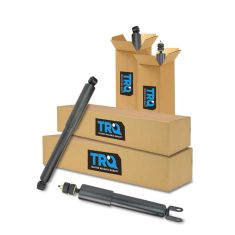Shocks and Struts
-
-
- Air Deflectors & Valance Panels
- Battery Trays & Related
- Body Panels
- Bumpers & Related - Front & Rear
- Convertible Tops, Soft Tops, & Parts
- Decal & Stripe Kits
- Emblems & Nameplates
- Engine Compartment Trim
- Frame Parts & Bushings
- Fuel Door Parts
- Fuel Tank Filler Neck
- Grille
- Header Panel
- Hood & Hatch Lift Supports
- Hood Latch & Catch Brackets
- Hood Release Cable
- Jack Pads
- Radiator Supports
- Rust Repair Panels
- Splash Shields & Fender Liners
- Tailgate Cables
- Tailgate Hinges & Related
- Weatherstripping
-
- Car Covers
- Exterior Lighting
- Exterior Parts & Accessories
- Exterior Safety & Security
- Exterior Storage
- Fender Flares
- License Plate Brackets & Frames
- Mud Flaps & Splash Guards
- Nerf Bars, Side Steps, Running Boards
- Radio Antenna
- Rain Deflectors
- Roll Bars, Light Bars, & Related
- Roof Rack
- Skid Plates
- Spare Tire Carriers & Related
- Spare Tire Covers
- Tire Care
- Tonneau Covers
- Tow Hooks & D-Shackles
- Towing Accessories
- Trailer Hitch & Components
-
- Accelerator Pedal Pad
- Auto Carpet
- Brake Pedal Pad
- Clutch Pedal Pad
- Console Parts
- Dash Pad Cover
- Dash Vents
- Floor Mats & Liners
- Horns & Horn Parts
- Interior Parts & Accessories
- Mirror - Interior Rear View
- Seat Cover and Sets
- Seat Heater Kits
- Seat Parts and Accessories
- Sun Visors & Related
- Trunk & Cargo Parts
-
- Accelerator Pedals & Sensors
- Alarms, Control Modules, & Remote Start
- Cruise Control Switch & Lever
- Electrical Parts
- Hazard Switch
- Ignition Key Lock Cylinder
- Ignition Switch
- Keyless Entry Remote & Related
- Neutral Safety Switch
- Parking Assist Cameras & Monitors
- Power Mirror Switch
- Power Seat Switches
- Power Window Switch
- Radio, Navigation, Entertainment
- Reverse Light Switch
- Trunk Release & Lock Solenoids
- Turn Signal Switches and Levers
- Windshield Wiper Switch
-
- Idler Arm
- Pitman Arm
- Power Steering Hoses
- Power Steering Oil Cooler
- Power Steering Pressure Sensor
- Power Steering Pump
- Power Steering Pump Cooling Fan
- Power Steering Pump Pulley
- Power Steering Pump Reservoir
- Steering Dampers
- Steering Knuckles and Spindles
- Steering Rack and Gear Boxes
- Steering Shafts & Couplers
- Steering Wheels & Column Parts
- Tie Rods & Adjusting Sleeves
-
-
-
-
-
6123
613
10
10
-
Notify When Available
Replaces Chevrolet GMC Cadillac Rear Driver & Passenger Side Heavy Duty 2 Piece Shock & Spring Assembly Set TRQ SBA70241
Brand: TRQ - SBA70241$99.95Save 26%List $134.95 Save $35.00Brand: TRQ - SBA70241$99.95Save 26%List $134.95 Save $35.00 -
Notify When Available
Replaces Chevrolet GMC Cadillac Front Driver & Passenger Side 2 Piece Magnetic Ride Control Shock & Spring Assembly Set TRQ SCA33131
Brand: TRQ - SCA33131$659.95Save 21%List $832.95 Save $173.00Brand: TRQ - SCA33131$659.95Save 21%List $832.95 Save $173.00 -
Notify When Available$18.95Save 27%List $25.95 Save $7.00Brand: TRQ - PSA60166$18.95Save 27%List $25.95 Save $7.00
-
Notify When Available
Replaces Chevrolet Buick Rear Driver & Passenger Side 2 Piece Shock Absorber Set TRQ SBA51121
Brand: TRQ - SBA51121$82.95Save 15%List $97.95 Save $15.00Brand: TRQ - SBA51121$82.95Save 15%List $97.95 Save $15.00 -
Notify When Available
Replaces BMW Rear Driver & Passenger Side 2 Piece Shock Absorber Set TRQ SBA60351
Brand: TRQ - SBA60351$72.95Save 24%List $95.95 Save $23.00Brand: TRQ - SBA60351$72.95Save 24%List $95.95 Save $23.00 -
Notify When Available
Replaces Chevrolet GMC Buick Front & Rear 4 Piece Complete Strut Assembly & Shock Absorber Kit TRQ SKA85602
Brand: TRQ - SKA85602$274.95Save 26%List $369.95 Save $95.00Replaces Chevrolet GMC Buick Front & Rear 4 Piece Complete Strut Assembly & Shock Absorber Kit TRQ SKA85602
Brand: TRQ - SKA85602$274.95Save 26%List $369.95 Save $95.00 -
Notify When Available
Replaces 2014-20 Acura MDX Front Driver & Passenger Side 2 Piece Strut & Spring Assembly Set TRQ SCA33016
Brand: TRQ - SCA33016$339.95Save 13%List $390.95 Save $51.00Replaces 2014-20 Acura MDX Front Driver & Passenger Side 2 Piece Strut & Spring Assembly Set TRQ SCA33016
Brand: TRQ - SCA33016$339.95Save 13%List $390.95 Save $51.00 -
Notify When Available
Replaces 2014-22 Jeep Cherokee Front Wheel Drive Front Driver & Passenger Side 2 Piece Strut & Spring Assembly Set TRQ SCA28768
Brand: TRQ - SCA28768$219.95Save 29%List $308.95 Save $89.00Brand: TRQ - SCA28768$219.95Save 29%List $308.95 Save $89.00 -
Notify When Available
Replaces Chevrolet GMC Cadillac Front & Rear 4 Piece Shock Absorber Set TRQ SBA60300
Brand: TRQ - SBA60300$124.95Save 21%List $157.95 Save $33.00Brand: TRQ - SBA60300$124.95Save 21%List $157.95 Save $33.00 -
Notify When Available$109.95Save 25%List $146.95 Save $37.00Brand: TRQ - SBA60162$109.95Save 25%List $146.95 Save $37.00
loading...
Choose the Make of Your Vehicle
